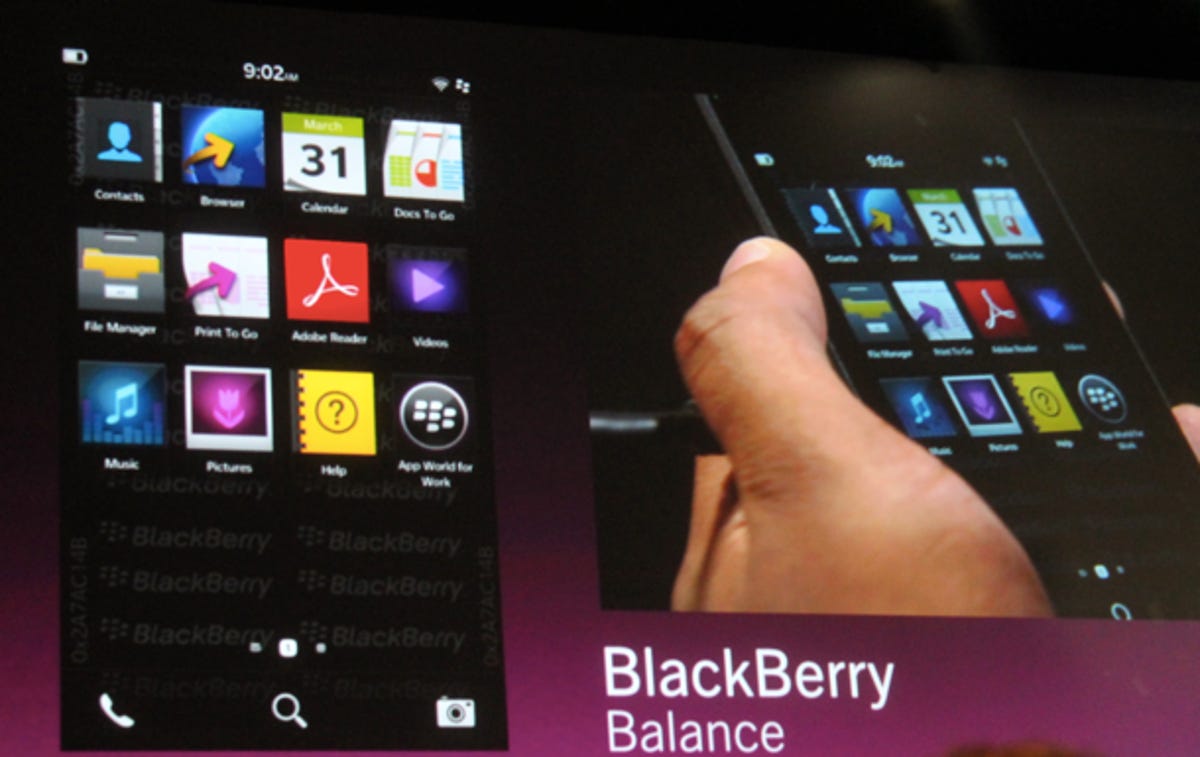SAN JOSE, Calif.–During RIM’s heyday, no device was better than a BlackBerry at keeping corporate information secure. Despite moves by companies like Yahoo to cease supporting BlackBerry phones, RIM is determined to make its upcoming overhauled BlackBerry 10 operating system as work-friendly as possible, for both the user and their company.
Related stories:
- BlackBerry 10 OS: A closer look at messenger, navigation
- A peek at BlackBerry 10 OS browser, messenger, flow
- RIM pushes BlackBerry 10 into the spotlight at BlackBerry Jam
The feature in question, called BlackBerry Balance, has a handy behavior that lets you press a button to toggle between personal and professional profiles.
BlackBerry Balance isn’t entirely new. In fact, bits and pieces have existed for company IT managers since BlackBerry OS 6. However, the implementation in OS 10 is new, and the full-fledged features will help employees and employers quickly switch profiles and get to the apps they need without digging for them in the interface, and without leaking sensitive information.
When you connect a future BlackBerry 10 device to your office’s corporate policy, IT managers can do things like set an automatic timeout and lock screen, which helps keep other from snooping after a set period of inactivity. In addition, policy managers can load mandatory apps, like Salesforce. This is standard stuff offered on other platforms.


Jessica Dolcourt/CNET
Manually switching from personal to work profiles does a few things. It follows your work’s particular IT policy, keeping you from e-mailing or copying and pasting sensitive information from work to personal accounts. Balance will also make those work apps visible.
If you download certain “white-listed” apps from BlackBerry World, they’ll download into the work account, and surface when the work mode is switched on. Switch to personal mode and you hide work apps and even e-mails, so that private information stays there, and kids playing on a phone can’t accidentally call your co-workers or boss.
Also changed is the e-mail sign-up process, which on the front end works about the same way as adding a person e-mail account. In previous iterations, this process of signing up to the secure BES (BlackBerry Enterprise Server) was longer and more complicated.
Update, Tuesday, September 25, 2012, 12:45 p.m. PT: New details were added.



